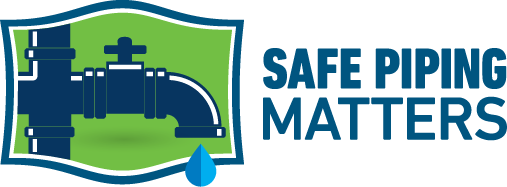Are Copper Pipes Safe?
When considering piping options, a material’s safety should be a primary consideration along with reliability, durability and other performance factors. As a long-standing option for piping, it’s important for contractors, building owners, homeowners and municipal officials to understand how a material like copper measures up in terms of health, safety and contamination resistance.
A Long History of Use
One of the reasons why copper piping is so popular today is because it possesses a long, proven history of use. The ancient Egyptians used copper pipes to transport their potable water, much like many communities or businesses do today. Because of this, over the centuries, the process of manufacturing and installing copper has been nearly perfected, resulting in consistent, high-quality, safe, standardized piping products and systems.
Is Copper Safe for Human Health?
Just as humans must consume iron to support blood health, they must also have copper; this is especially true for the cardiovascular system, where copper helps maintain the heart’s elasticity. Copper is a necessary human nutrient and a great deal of people likely consume copper every day without realizing it; good sources include almonds, shellfish, whole grains, chocolate and tap water.
While copper is regulated under the Environmental Protection Agency (EPA)’s Lead and Copper Rule, this is primarily to protect individuals suffering from Wilson’s Disease, which affects roughly 1 in 30,000 Americans. This genetic disorder prevents the body from automatically processing copper, which can lead to a long-term buildup in the body. To prevent this, the EPA’s limit for copper is 1,300 parts-per-billion (ppb) in drinking water. For comparison, that is 87 times higher than the limit for lead (15 ppb), and 35 percent lower than the 2,000 ppb limit set by the World Health Organization and most other countries for copper.
To fully evaluate copper’s safety as a piping material, it is important to acknowledge copper buildup in the body can be unhealthy. It’s possible to have too much of a nutrient, this is true for water, protein, iron or vitamins A, B, C, D and more.
However, for someone not suffering from Wilson’s Disease, consuming too much copper is not a concern. According to The Agency for Toxic Substances and Disease Registry, the average copper-in-water concentration ranges from 20 – 75 ppb; this is extremely far from the 1,300 ppb limit established by the EPA.
Do Copper Pipes Prevent Contamination?
Copper is nearly unmatched in its resistance to leaching and permeation. Leaching is when substances shed from a pipe wall and mix with the clean water passing through. For example, the six plastic piping polymers commonly used in plumbing systems are manufactured using complicated chemical blends. These blends consist not only of the base polymer (like vinyl chloride, or polyethylene) but with a variety of hydrocarbons and other additives. These are necessary to impart useful properties to the pipe, like oxidation resistance, chlorine resistance, UV resistance, and other chemical and physical properties.
Without additives, the polymers alone would be unsuitable for use as a pipe. As water runs through plastic pipes over time, these substances are either used up or can leach from the pipe wall and enter the water’s flow.
This is not an issue for copper piping because there are no foreign contaminants to be leached; copper piping is 99.9 percent pure copper and a small amount of phosphorous.
Permeation is when foreign substances in an environment around a pipe are able to pass through, or penetrate, the pipe wall and mix with the water within. Copper piping and many other metals are completely impermeable. It is impossible for contaminants – including chemicals – to permeate through copper, regardless of the pipe’s environment. While some plastics resist permeation more than others, all are subject to permeation from a variety of chemicals that can either degrade the integrity of the pipe or the quality of the water within the pipe.
Copper in Fires
Another one of copper’s valuable characteristics is its fire safety. During fires, copper will not burn, melt or give off toxic fumes, which is critical to the health of escaping occupants, fire responders and clean up crews. Perhaps more importantly, copper will not absorb the fumes emitted by burning or melting plastic piping, furniture or other building elements, helping to ensure the water inside remains clean. (For more information about the fire safety of piping materials, click here)
Copper is a Safe Piping Material
Copper pipes are safe for commercial, industrial and residential usage. It is worth noting individuals suffering from Wilson’s Disease have a sensitivity to copper consumption, but excessive exposure to copper through drinking water is controlled by the EPA and is extremely uncommon. Overall, copper piping is a safe selection. “All living organisms including humans need copper to survive; therefore, a trace amount of copper in our diet is necessary for good health.” – The Center for Disease Control and Prevention.
